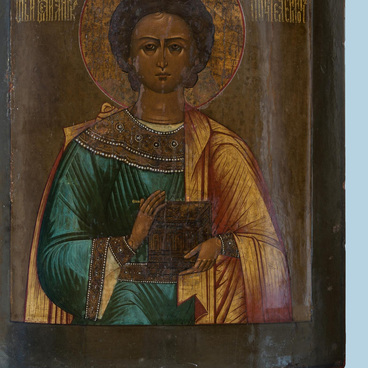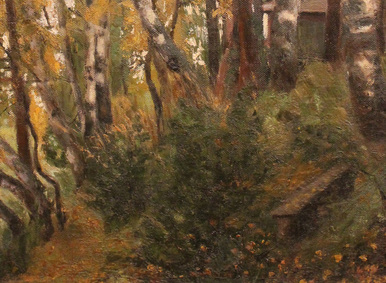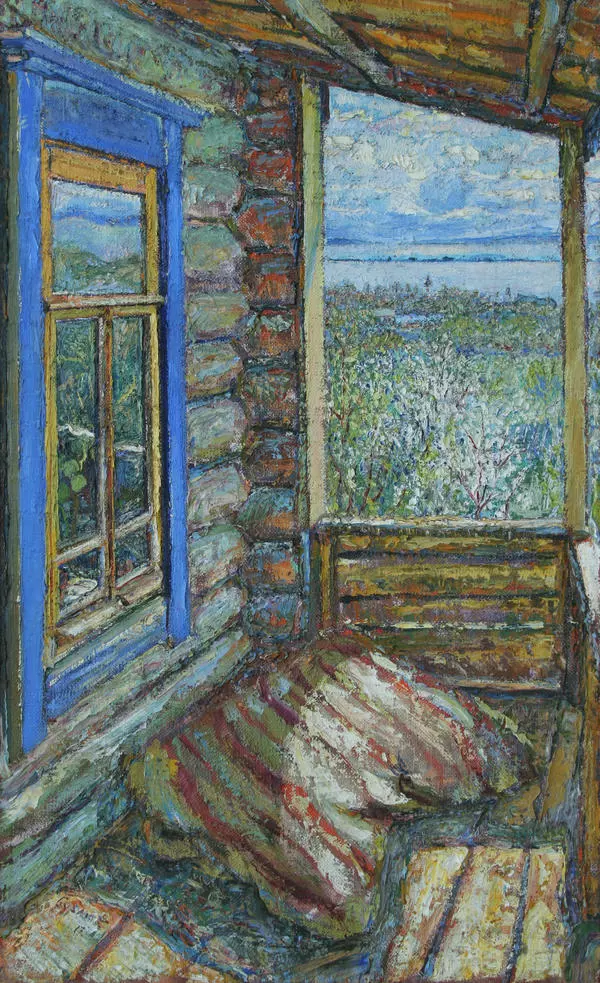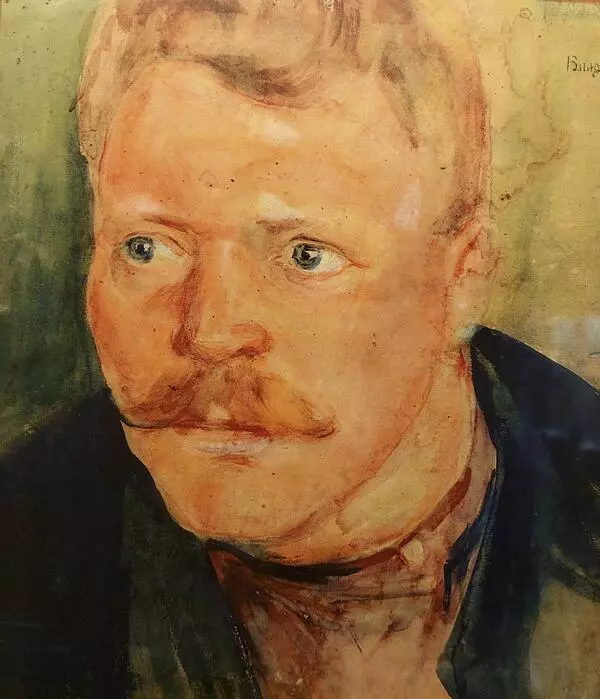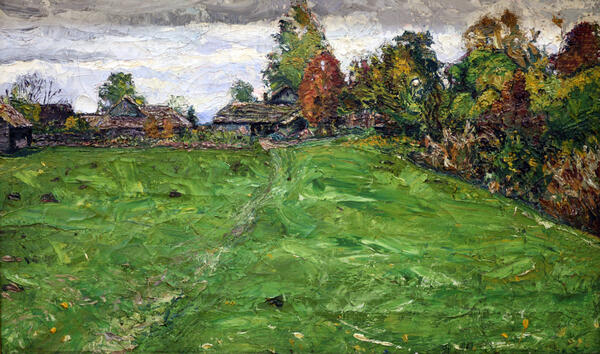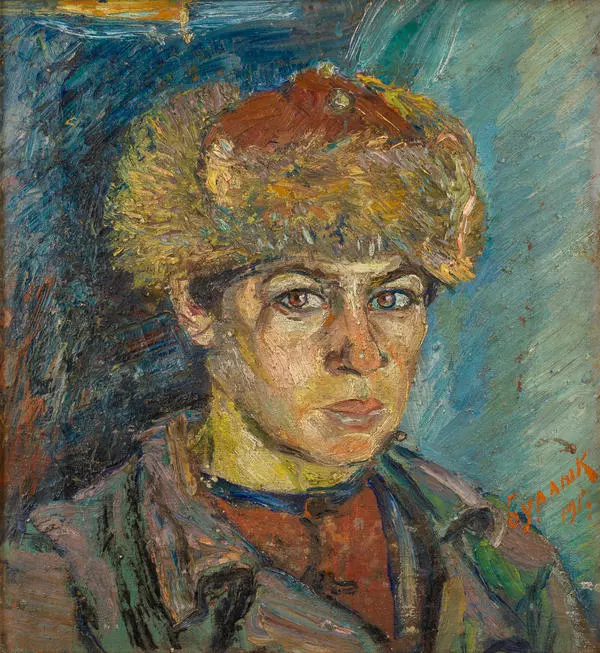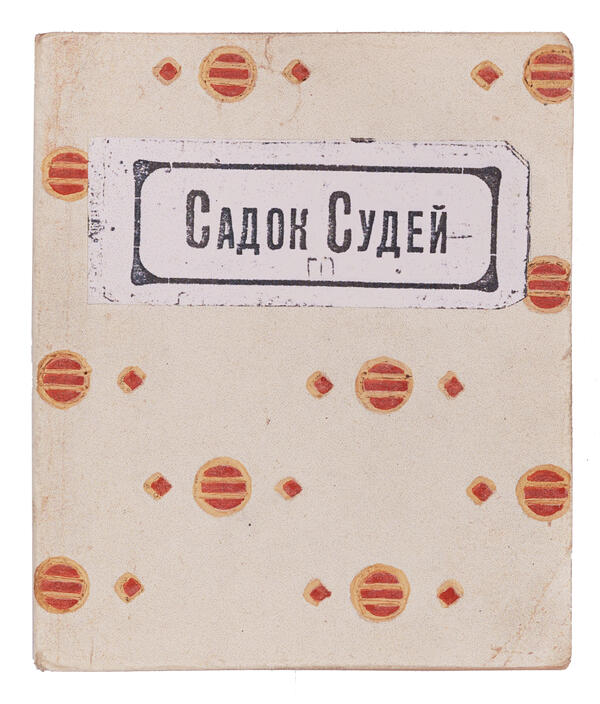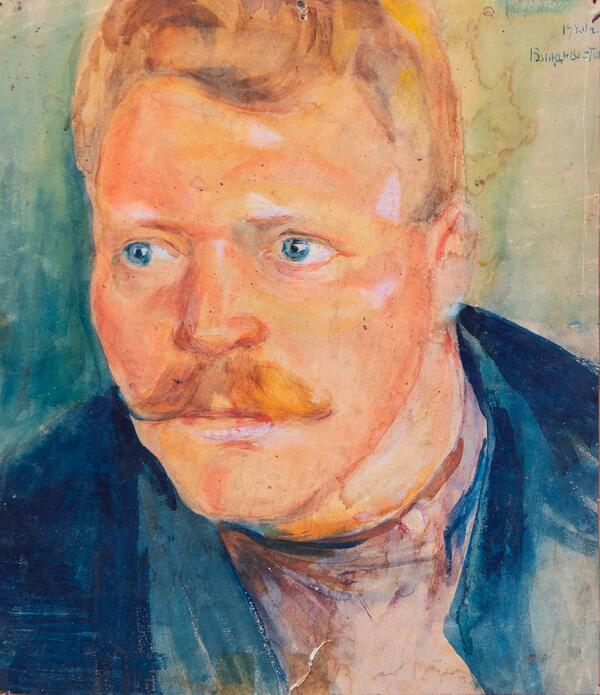The painting of David Davidovich Burliuk “Landscape. Crimea” does not follow the principles of the Cubo-Futurist movement to which its creator belonged.
The choice of the moment and the state of nature shows that the artist was attracted by the idea of depicting the change taking place in nature (and in the soul of the beholder) in the evening. The world is united in its transition from daytime — clear, flowery, earthly, and vivid — to nighttime, filled with the fading muffled rustle of shadows, revealing the daytime world of transient movements to the cosmos and eternity. This transition is almost palpable: it is in the air that conceals the distant background with the help of aerial perspective; it is in the detailed foreground, sparkling with the colors of the passing day; finally, it is in the road itself that connects day and night, near elaborate space and distant wide expanses.
The image itself — the road, the city, the tree located between the earth and the sky — is both simple and random, like the paintings of the Impressionists. The landscape, consciously philosophically generalized, evokes archetypal images in the beholder, universal symbols for many people that recount the structure of the world.
The tree — a dark spot standing out against the background of bluish distance — connects, as a vertical axis, the earthly and heavenly levels of being. It is a part of or an image of the World Tree.
The city, surrounded by greenery, is visible around it. Into this space, deep into the picture, the viewer is led by a shining road that has opened in the foreground, like a gate. It moves to the middle plane with the depicted city and tree, gradually becoming a generalized image, and then disappears, giving way to the sky and a distant fuzzy mountain.
The artist embeds the color and compositional
features of Impressionism into a complex and at the same time cohesive
composition with the combination and gradual generalization of all three
planes, with a light and air perspective and a play of rhythms and accents, in
which not only pure vibrant contrasting colors, but also a lot of soft nuanced
shades coexist. His space is fused together in a gradual transition from day to
night, and the artist’s task is not limited to simply conveying a random,
minute poetic impression. Rather, it is about the special thinking and
worldview of the artist, about his need to convey a single picture of being in
which opposite principles and forces interact together, where the human soul
breathes in the same rhythm that alternates day and night, the bright joyful
transitory states and equally beautiful mysterious and eternal elements.

